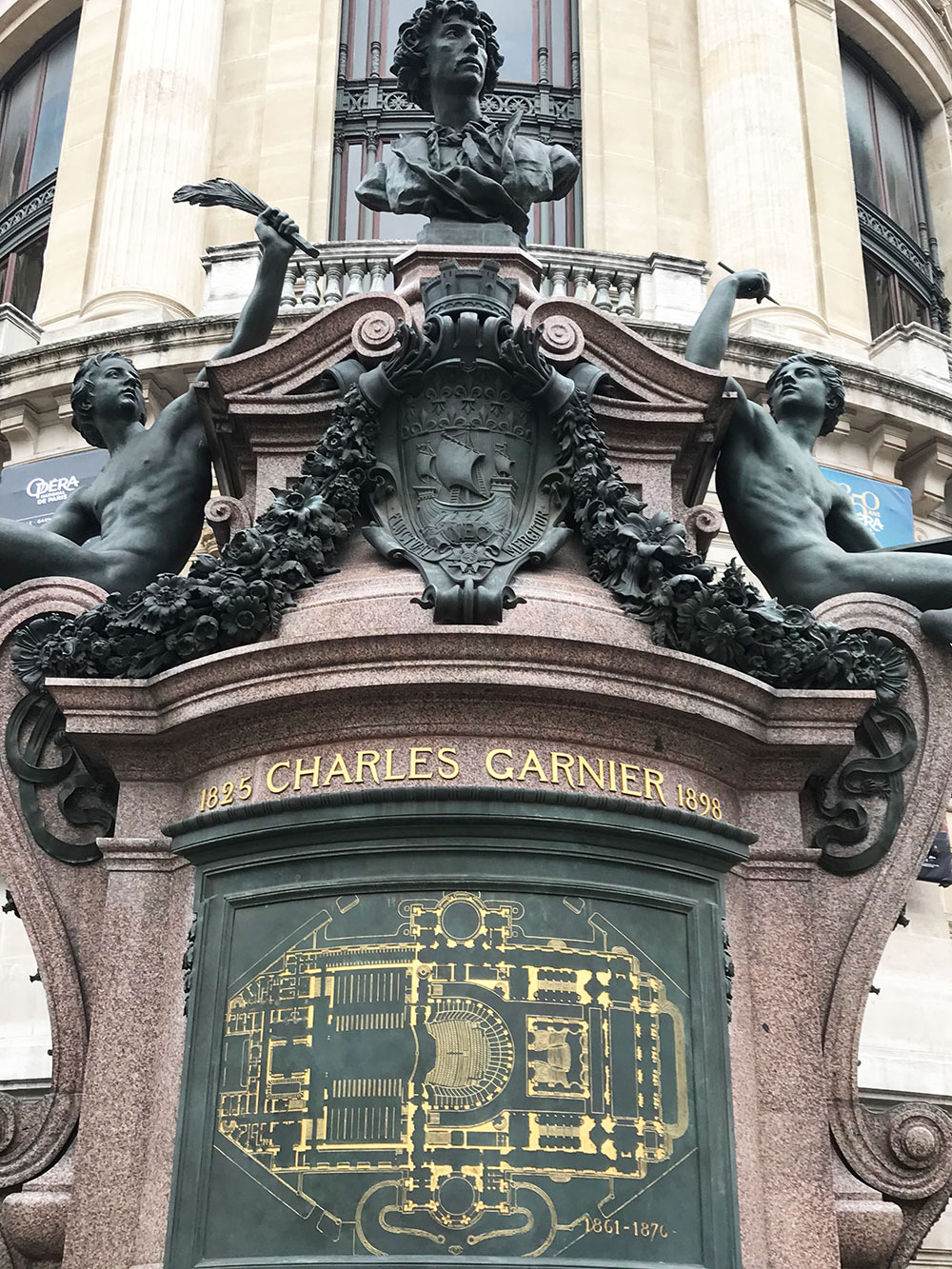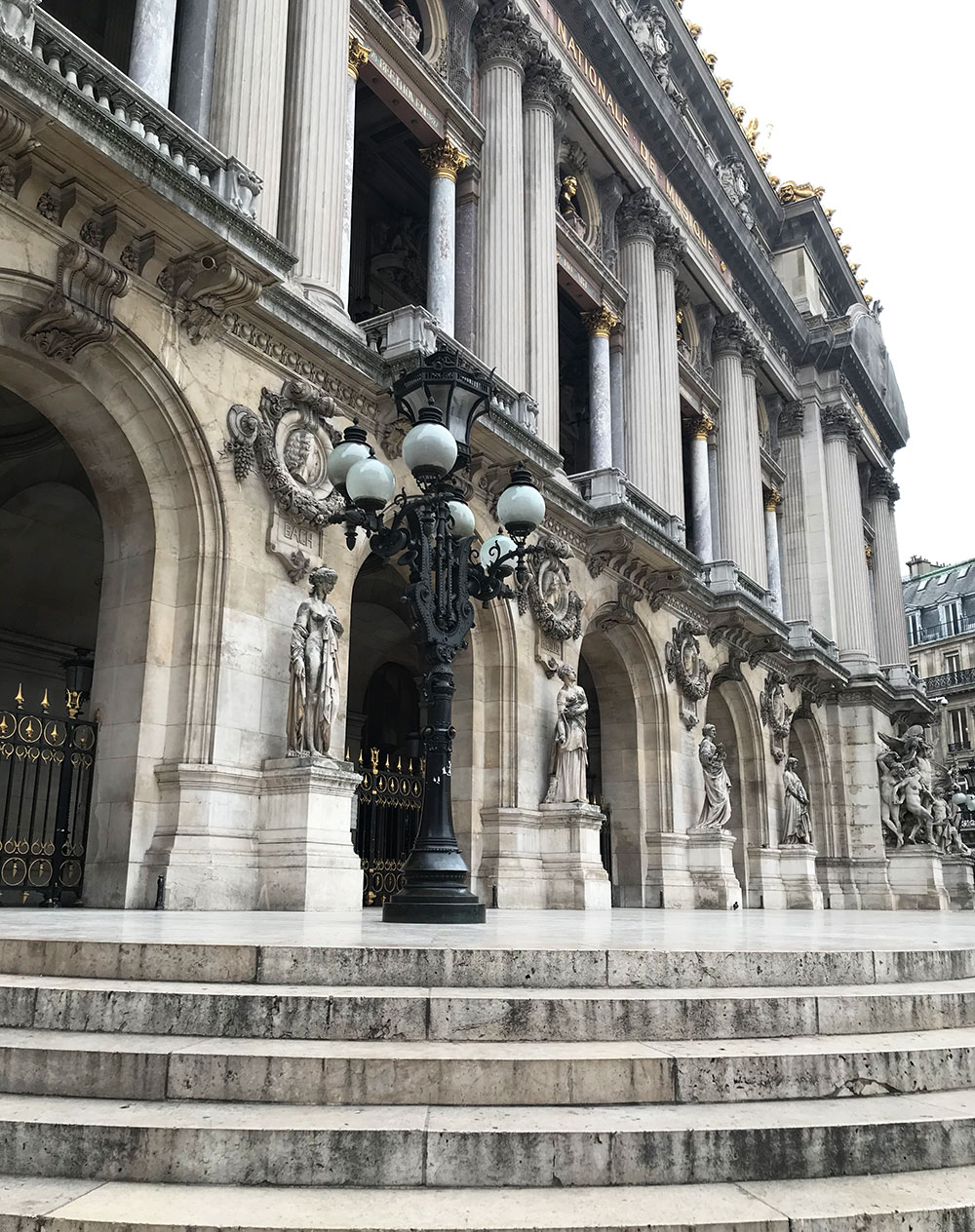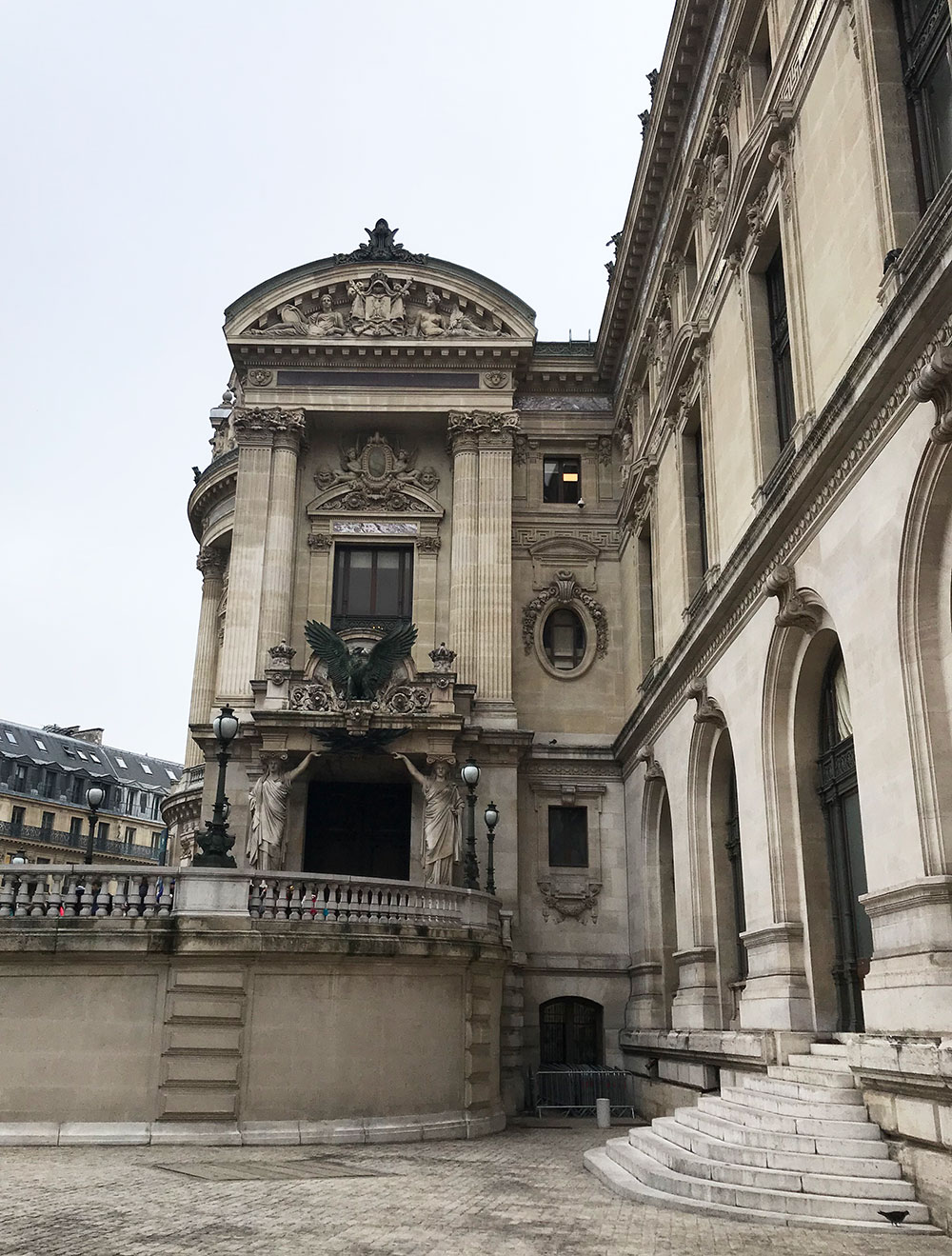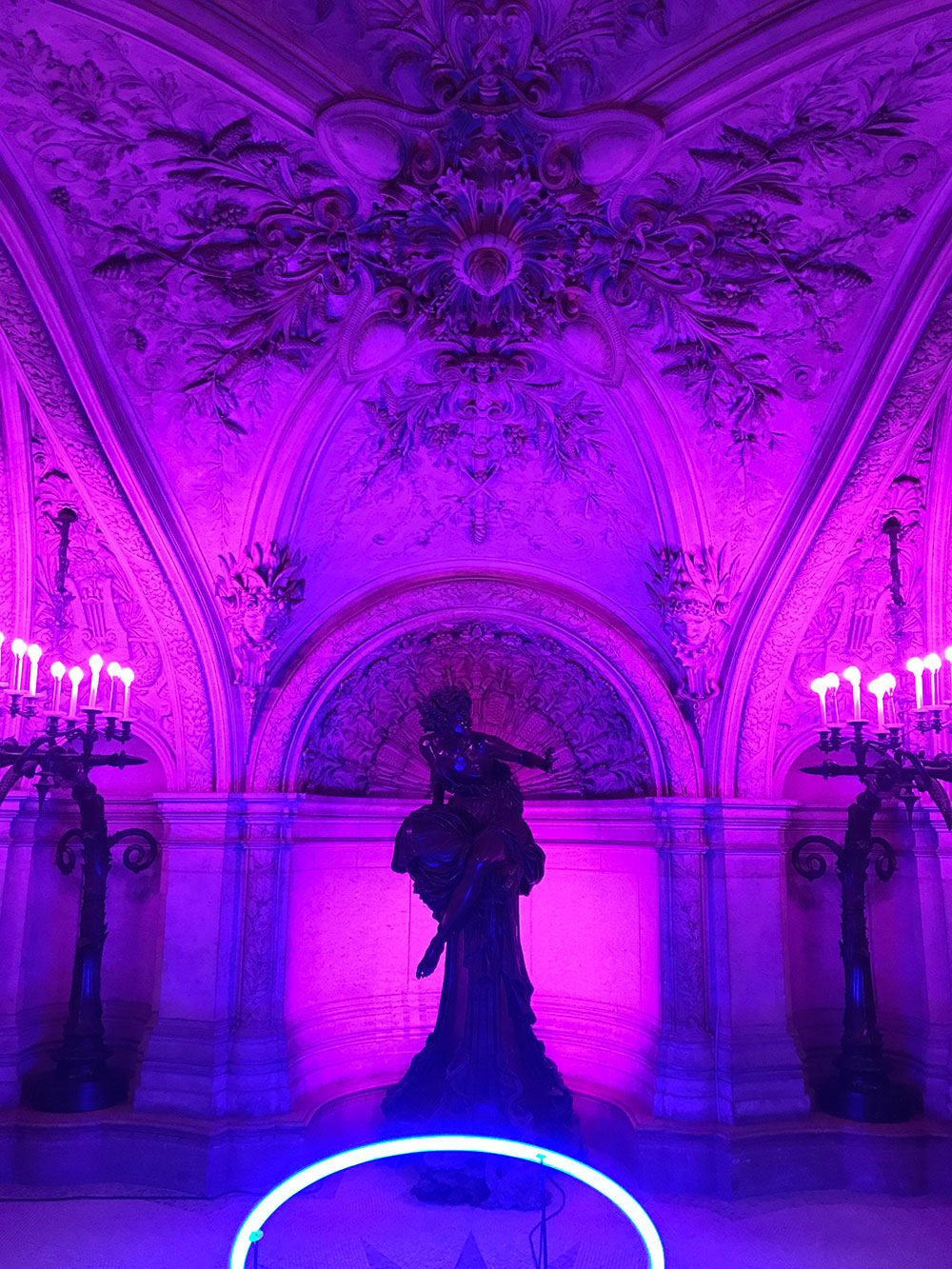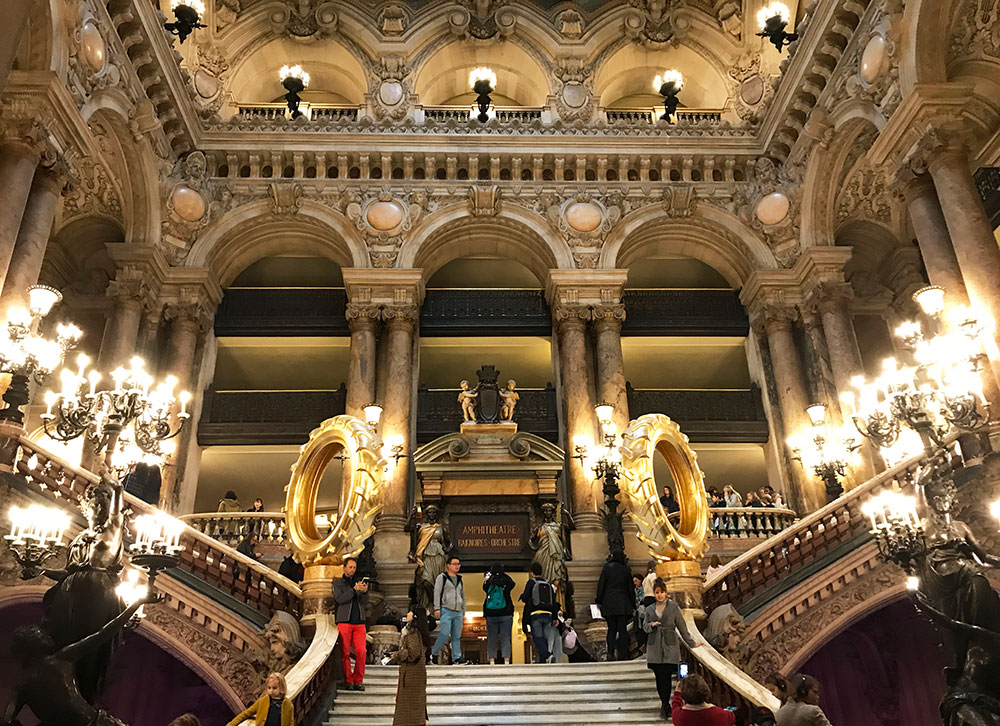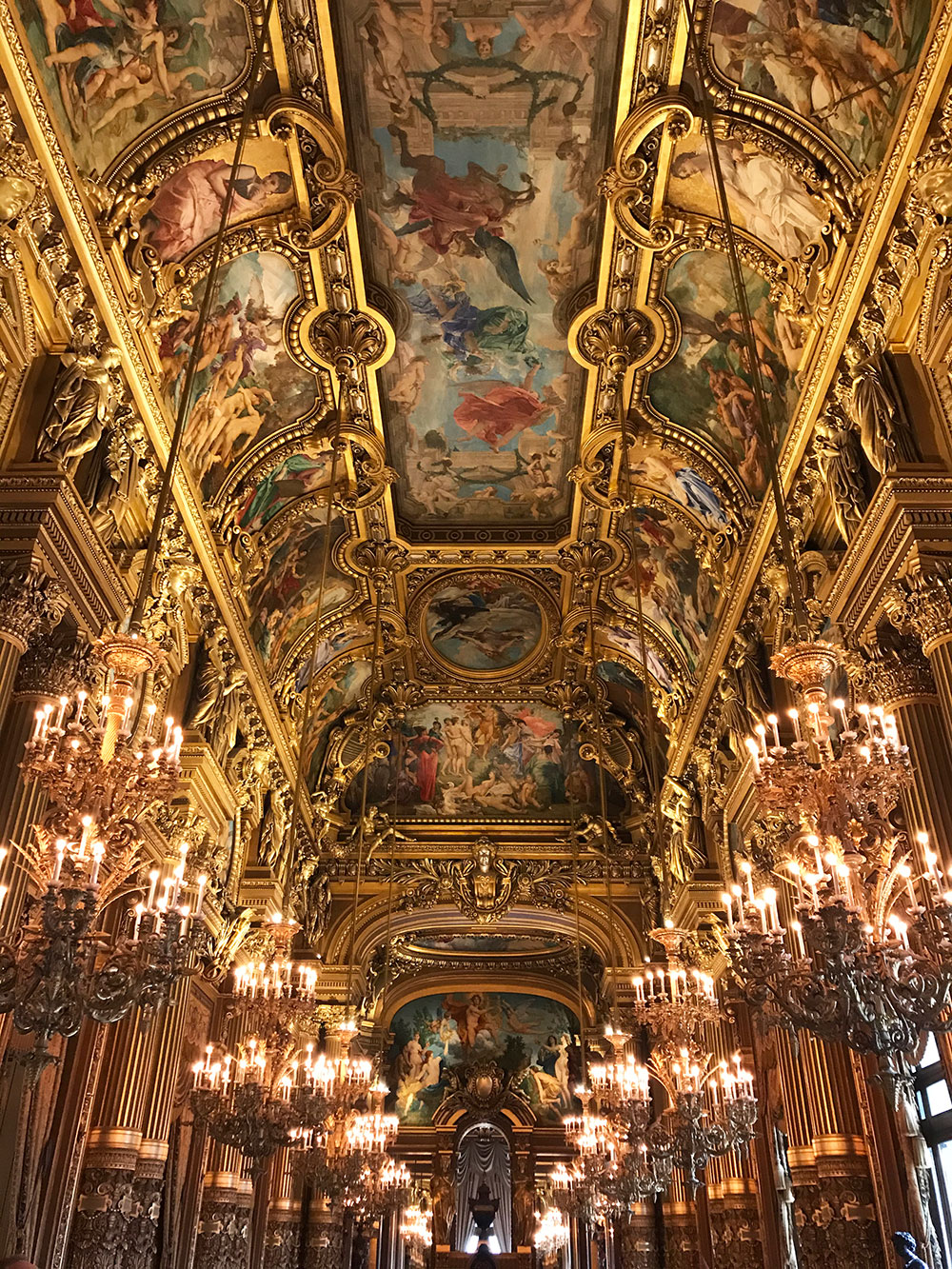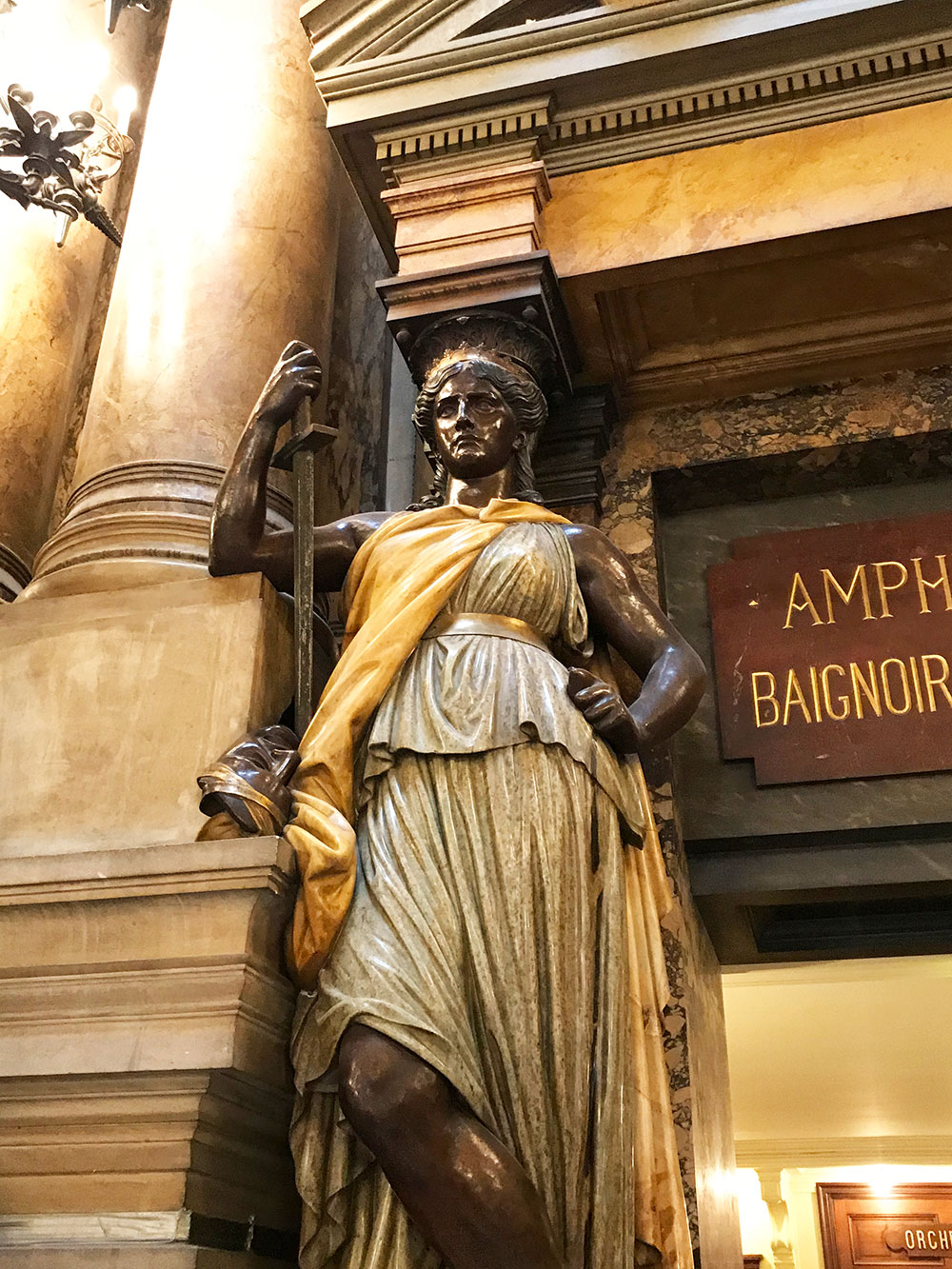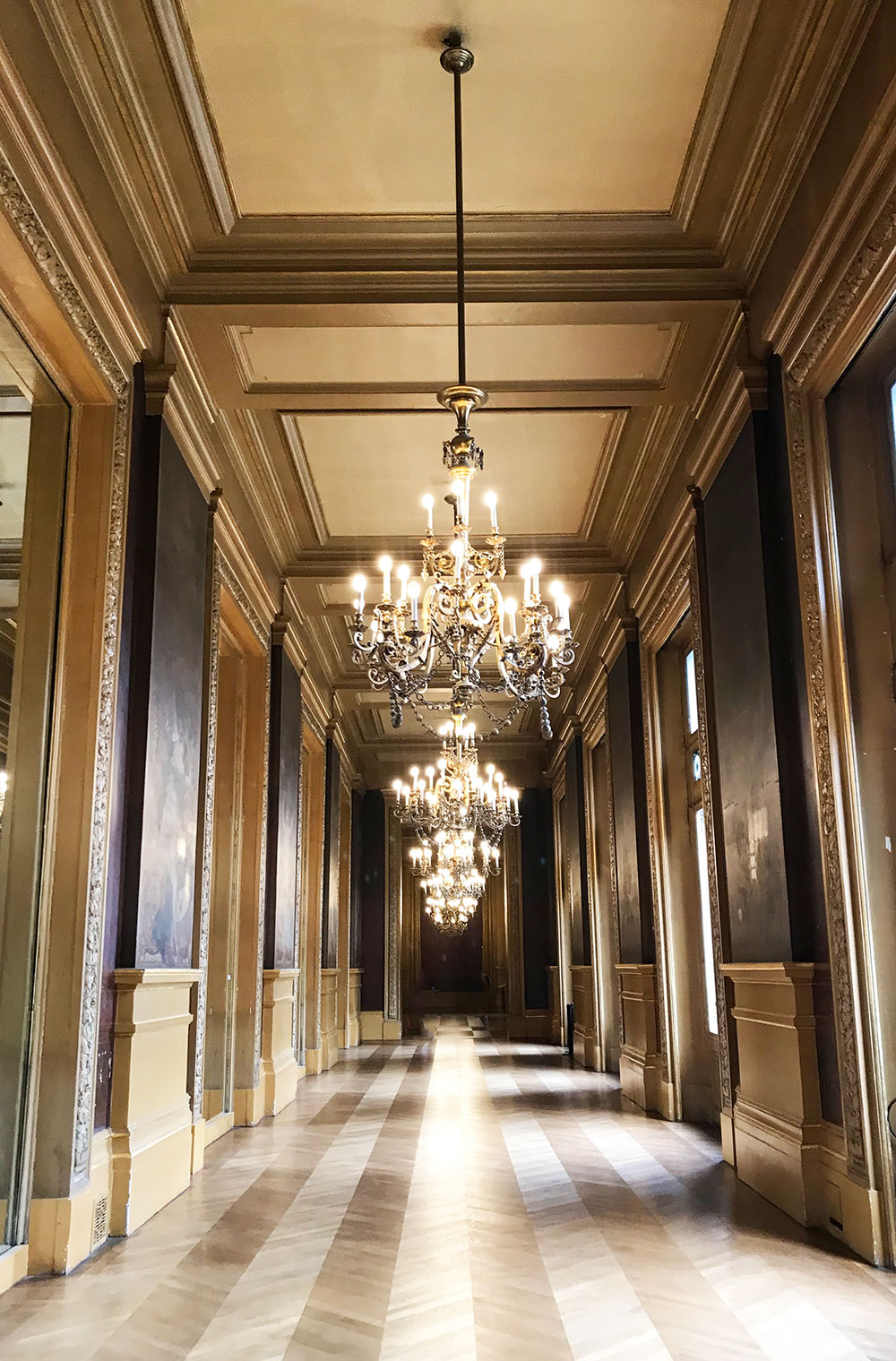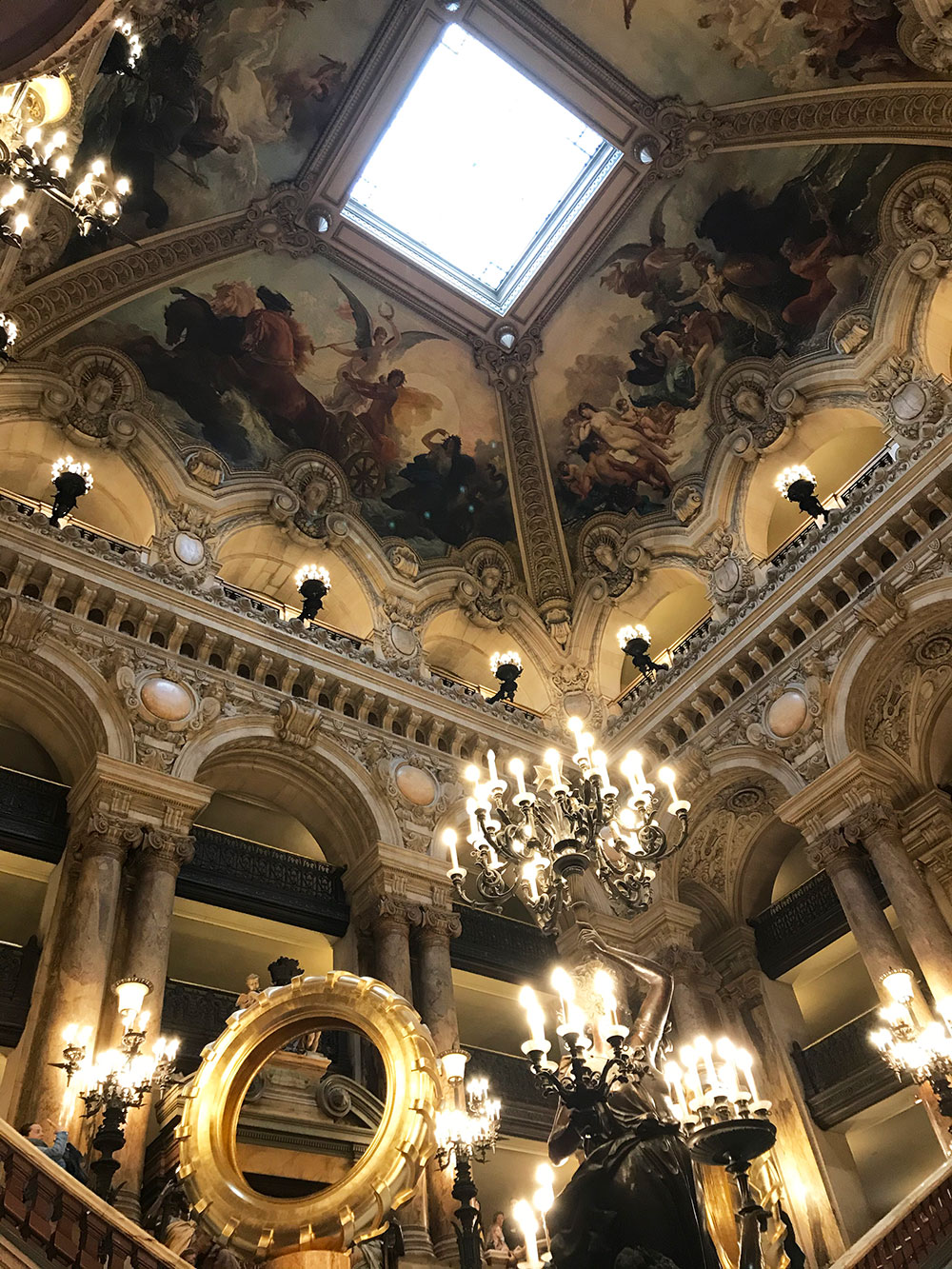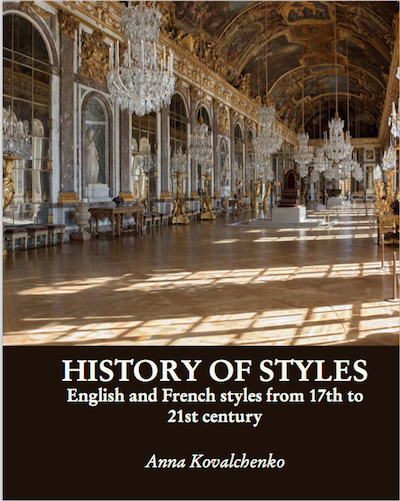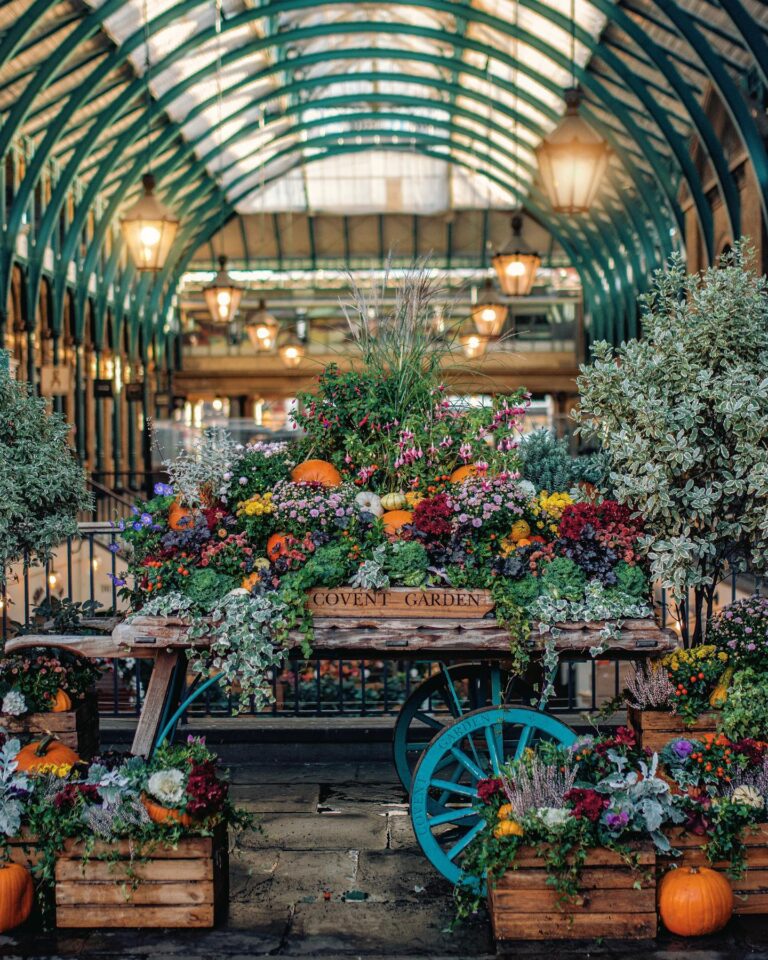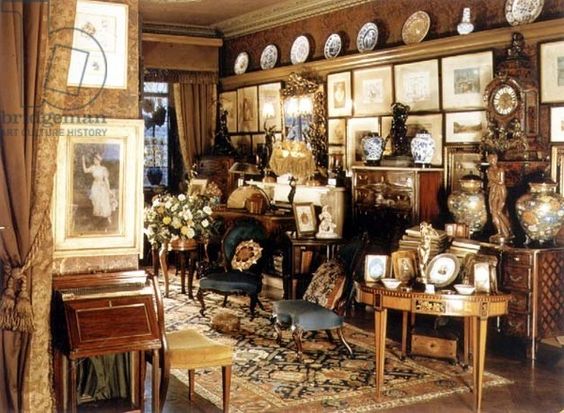Most Beautiful Interiors In Paris: A Visit To Paris Opera (Palais Garnier)
The main attraction of the Ninth District, the Opera is also called the Palais Garnier or Opera Garnier. To find it, you need to go to the very end of Opera Avenue. The building was called Paris Opera for a long time, but after the Opera Bastille opened in 1989, it began to be called after the architect Charles Garnier.
Palais Garnier was built under Napoleon III during the implementation of the plan for the transformation of Paris. No trees were planted on this street so that they did not block the view of the theater. This is very noticeable when visiting, and it also means that if you book a luxurious Paris vacation rental nearby, you may even see it from your window.
The architect Charles Garnier, whose gilded bust of Carpo’s work is installed from the side of Aubert Street, was almost unknown before, but he was determined to leave his mark on the architecture of Paris, creating a very original project.
Drawing the sketches of the Opera House, Garnier used elements of various styles and as a result created a magnificent, richly decorated structure, similar to which Paris had not yet seen.
, nofollow”>luxurious noopener rental see vacation window.
When the Empress of France, Eugénie, asked what kind of style this was, Garnier did not confuse and replied that it was “the style of Emperor Napoleon III.” In fact, the Paris Opera Garnier (Palais Garnier) is one of the most striking examples of the architecture of the Second Empire.
Due to the circumstances construction was only completed in 1875, when the Third Republic replaced the Second Empire. Garnier even had to buy a ticket for the opening of the theater at his own expense.
Partly due to the fact that the construction of the building lasted so long (a total of fourteen years), underground waters were found below the basement of the building, which had to be pumped into a huge reinforced concrete tank. This fact became the basis of the legend of the underground lake, which was used by Gaston Leroux in his book The Phantom of the Opera.
The facade of the theater is an amazing mixture of white, pink and green marble, colonnades, billowing horses, winged angels and sparkling busts of famous composers.
The interior of the theater is no less magnificent: the spacious foyer of the Opera Garnier is decorated with gold, marble, and mirrors. Here the public of the Second Empire could casually walk, showing each other their luxurious outfits.
The hall of the Paris Opera Garnier (Palais Garnier) is decorated with gilding and red velvet. A huge five-ton chandelier hangs from above, and the ceiling painted by Marc Chagall in 1964 depicts scenes from famous operas and ballets mixed together with the main sights of Paris.
The bottom of the stairs is guarded by two bronze floor lamps in the form of female figures holding bouquets.
You can explore the inside of the theater, including the auditorium. The entrance ticket also gives you the right to visit the Grand Opera Library and Museum, where you can see costumes, medium-quality portraits of the 19th century, as well as quite decent exhibitions on the theme of opera.
The large foyer was created by the architect with a sample of the front galleries of ancient castles.
Thanks to the magnificent game of mirrors and the presence of windows, the gallery seems visually larger than it actually is.
The main decorative element is the lyre, it is found everywhere around: on arches, heating grids and even on door handles.
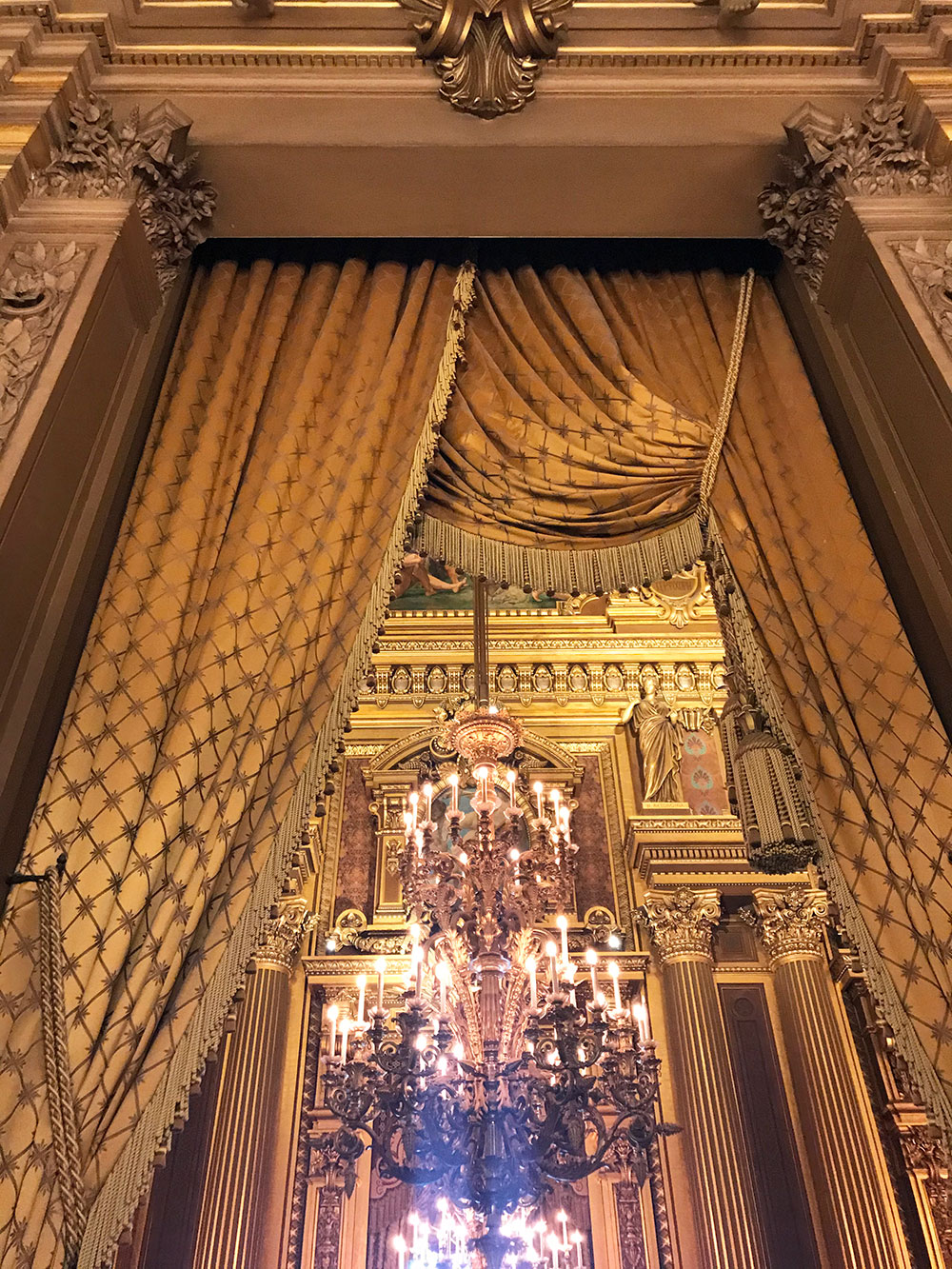

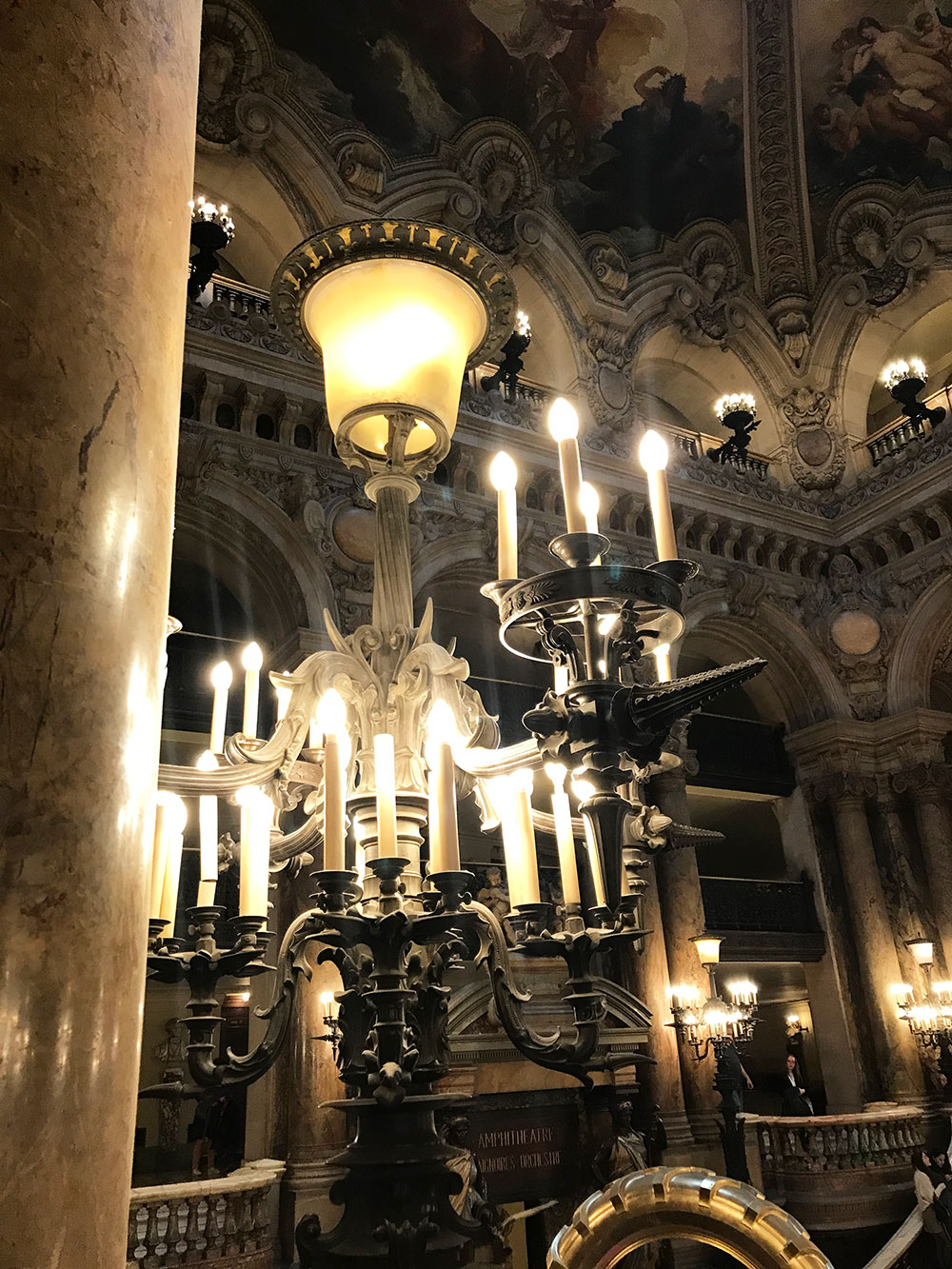
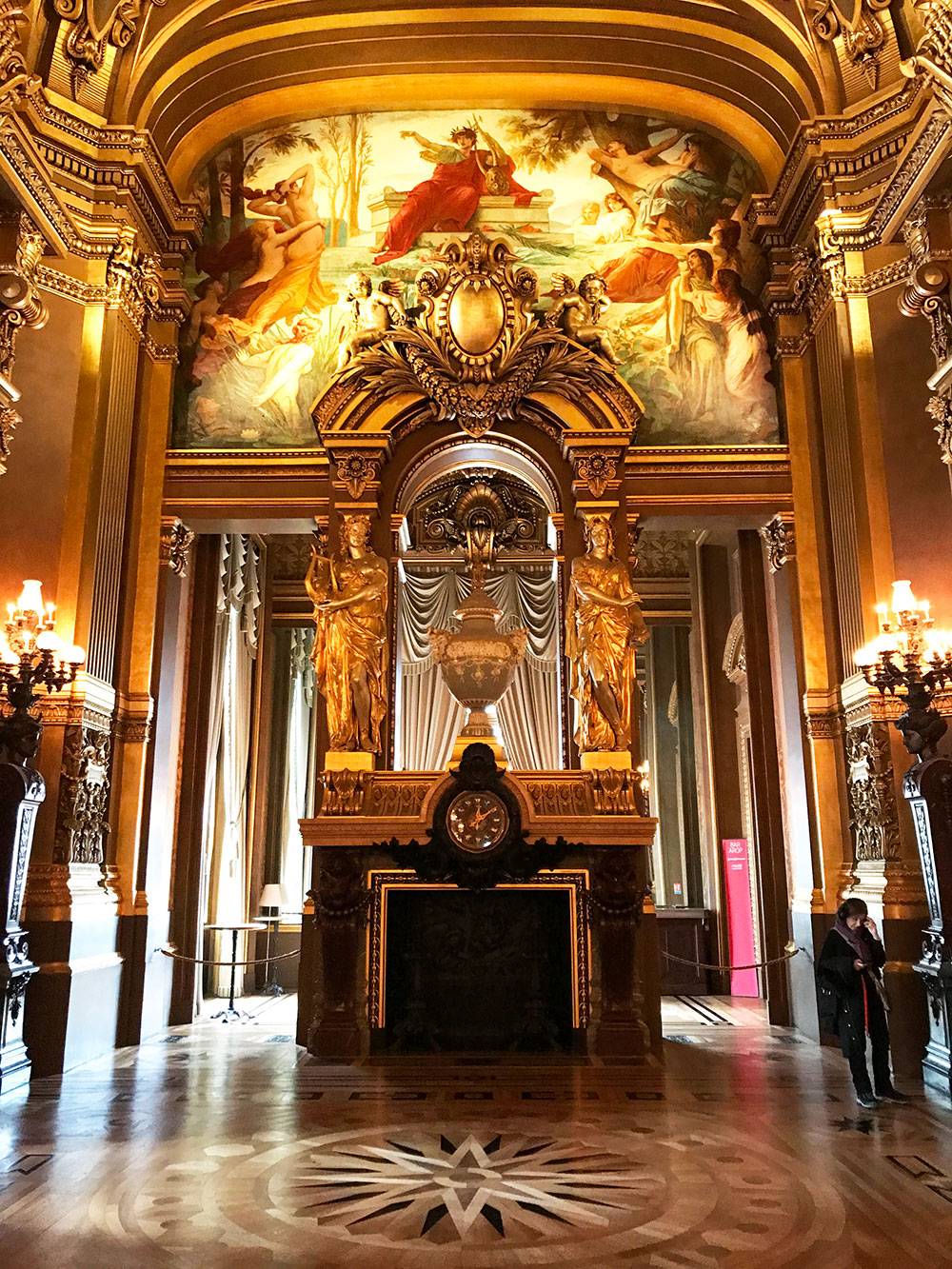
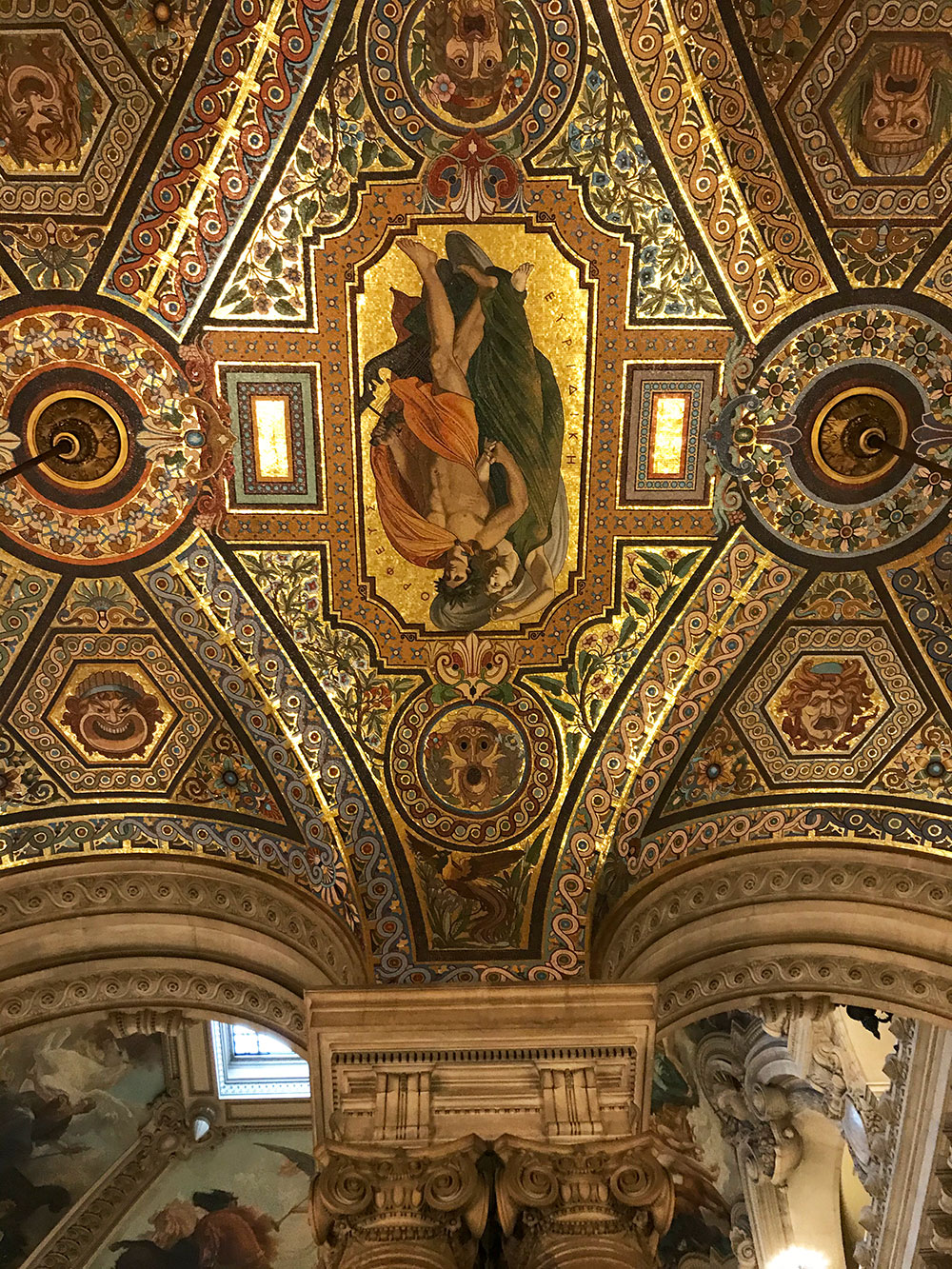

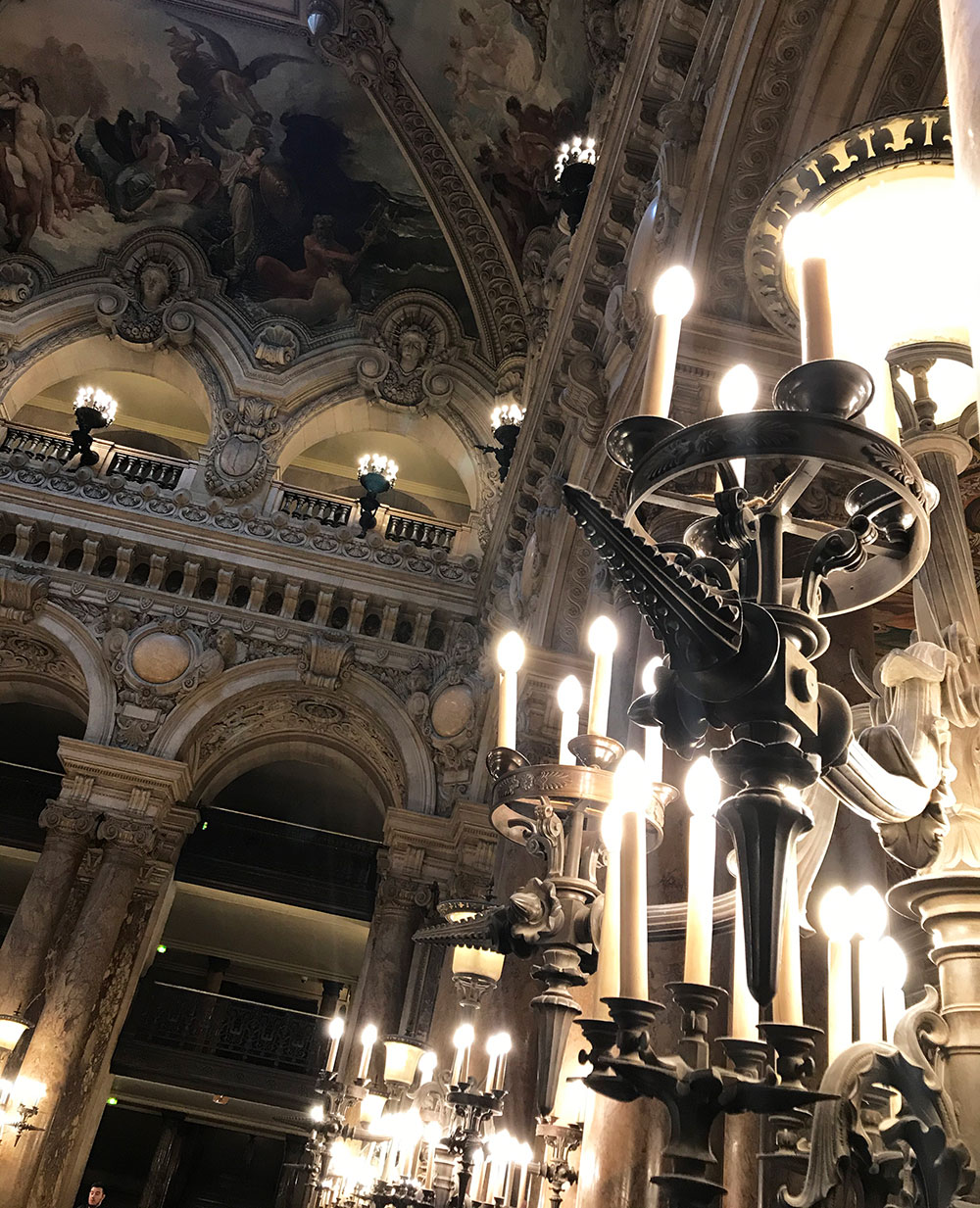
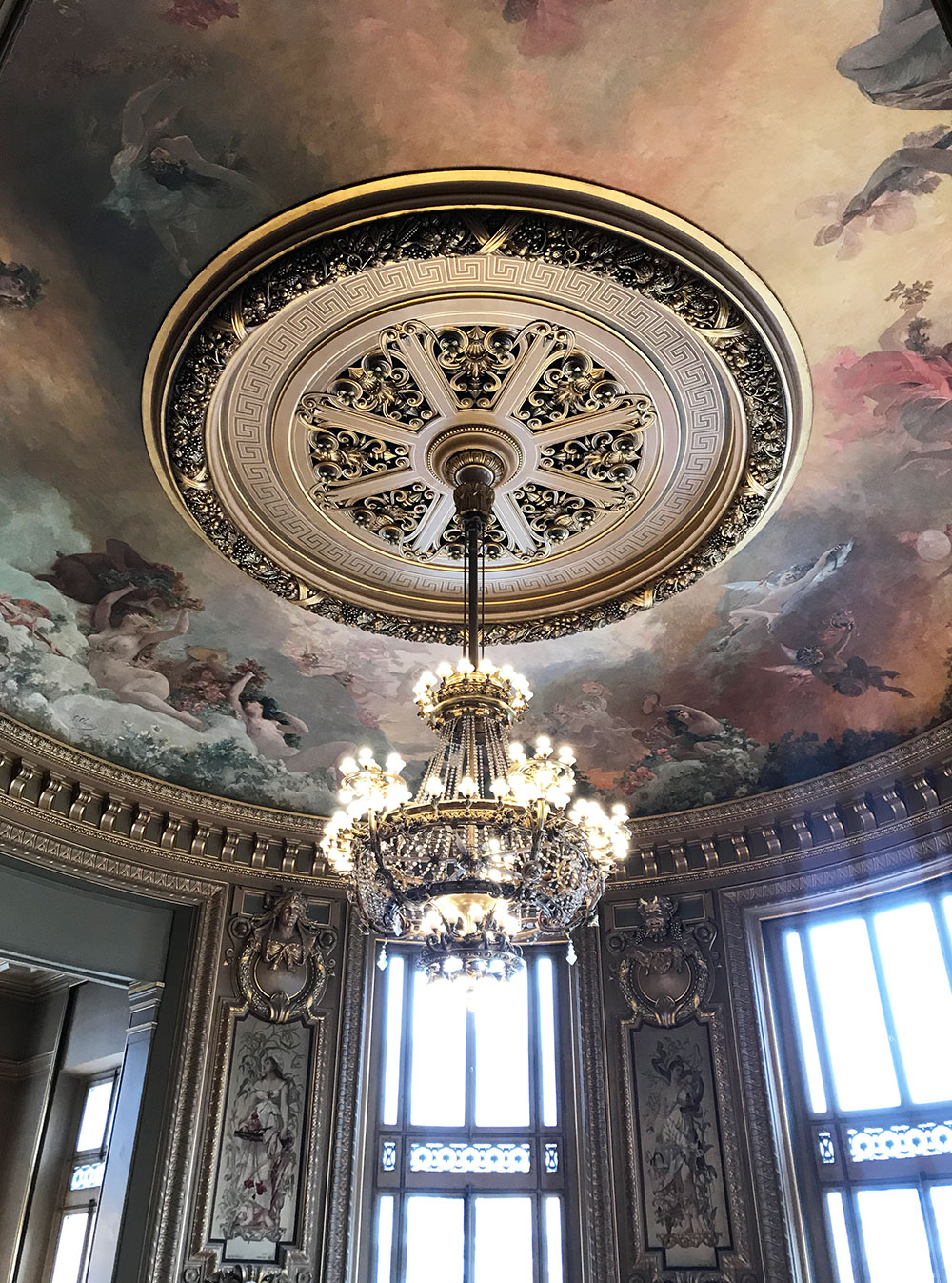
Paris Opera Garnier is definitely worth a visit, especially for those who love beautiful historic interiors.
Want to learn more about various historic interior styles? Read my History of Styles eBook:

